Bees appear in the Triton Fountain. What do they represent?
The wonderful Triton fountain is another of the many Roman masterpieces by Gian Lorenzo Bernini. It was built between the end of 1642 and the first half of 1643. As in the Fountain of the Bees, several curious stylized insects also appear here. Find out why.
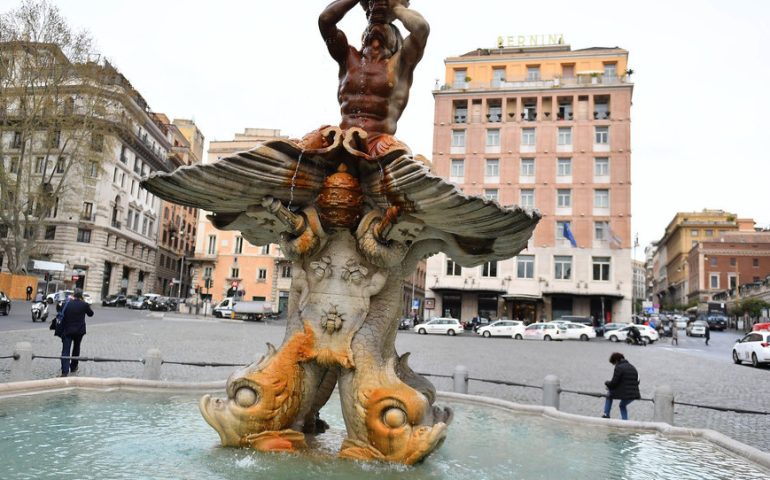
The fountain is in fact located in the current Piazza Barberini and is fed by a branch of the Felice aqueduct, which passed in the immediate vicinity. It best expresses the new Baroque architectural and artistic conception of space. In fact, the sculptural part completely includes the same architectural structure. The four dolphins with intertwined tails, between which are placed the papal coats of arms with bees, the heraldic symbol of the Barberini family, support an enormous shell, from which the Triton rises imposing and majestic.
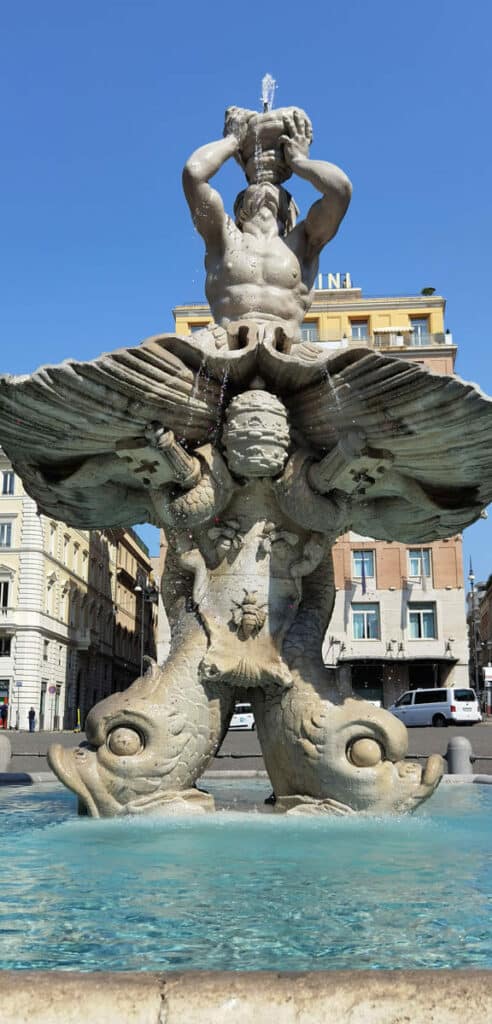
The symbols carved in the Triton fountain recall the dynastic celebration of the Barberini, the family to which Pope Urban VIII belonged. Bees are the heraldic symbol of the family, and symbolize the triumph of Divine Providence. Dolphins, benevolent animals par excellence, represent the works of charity carried out by the Pope’s family. Triton, son of Amphitrite and Poseidon, whose name means “noisy”, announced the arrival of Poseidon but at the same time proclaimed to the world the power of the Pope and the Barberini family.
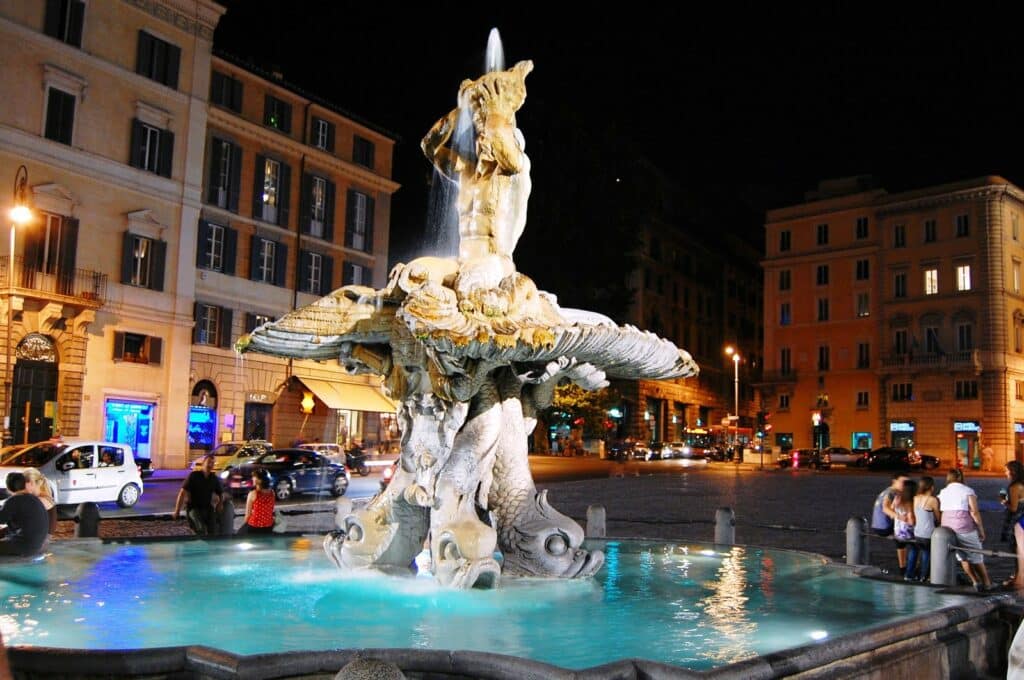
The arrangement of the fountain restored decorum to a still marginal area in the city, previously used for the cultivation of vines.
From that moment the area began to be animated by a lively cultural life, so much so that it became the favorite meeting place for many artists visiting Rome.
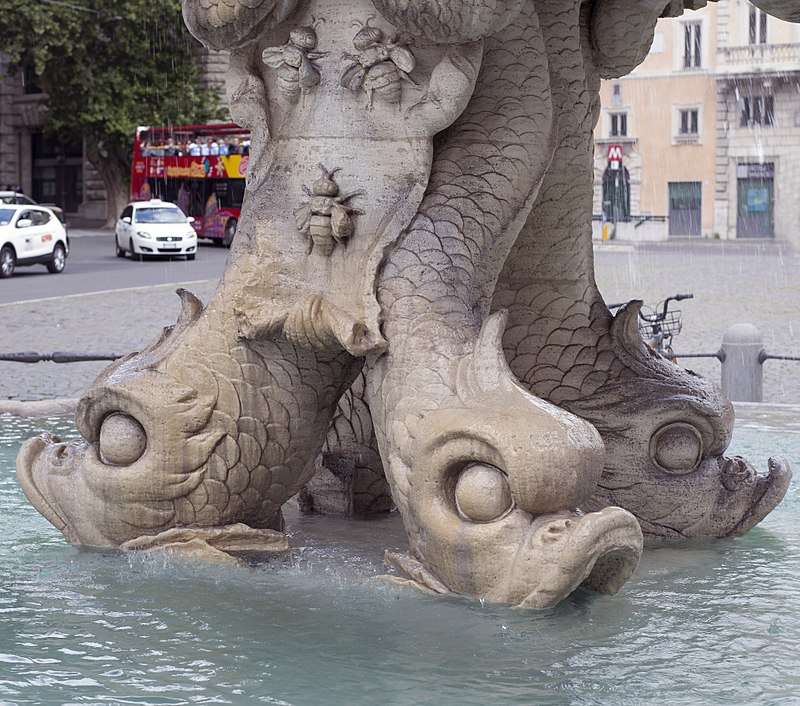
Even now the Triton Fountain is one of the most visited in Rome; entirely carved in travertine, it is composed of a basin located at ground level, above which are placed four dolphins with their mouths open emerging from the body of water. The dolphins intertwine their tails and hold a large open bivalve shell, in the center of which stands the imposing sea god Triton.
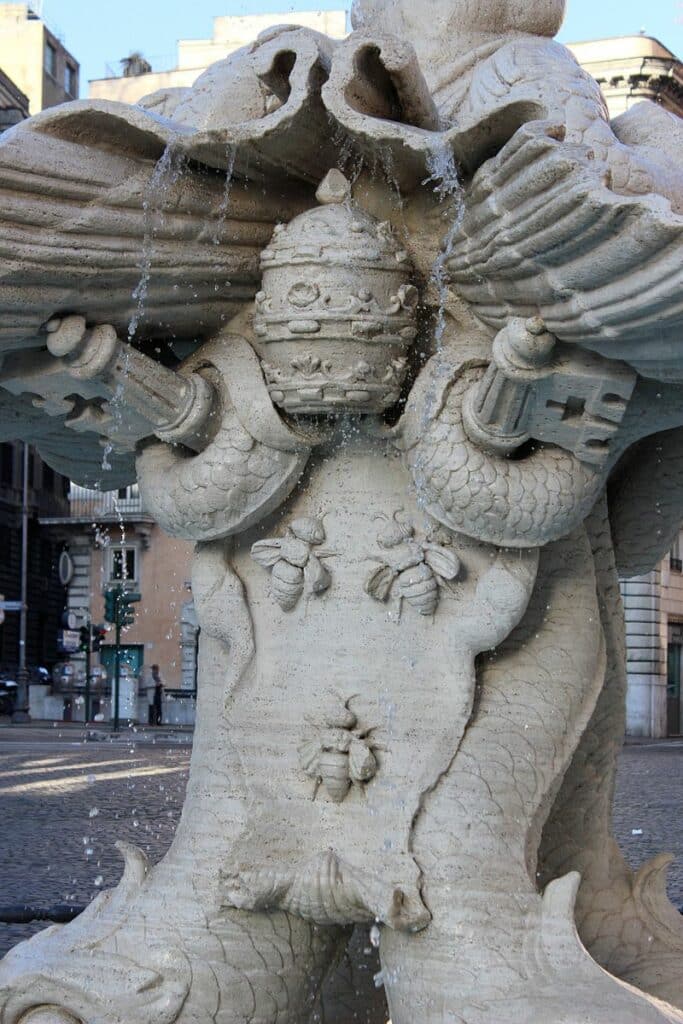
Triton has a human appearance (this is an important novelty because he was usually depicted as monstrous) with a powerful and upright bust and legs covered with scales and he tilts his head backwards and blows into a large cone-shaped shell which he holds with his arm.
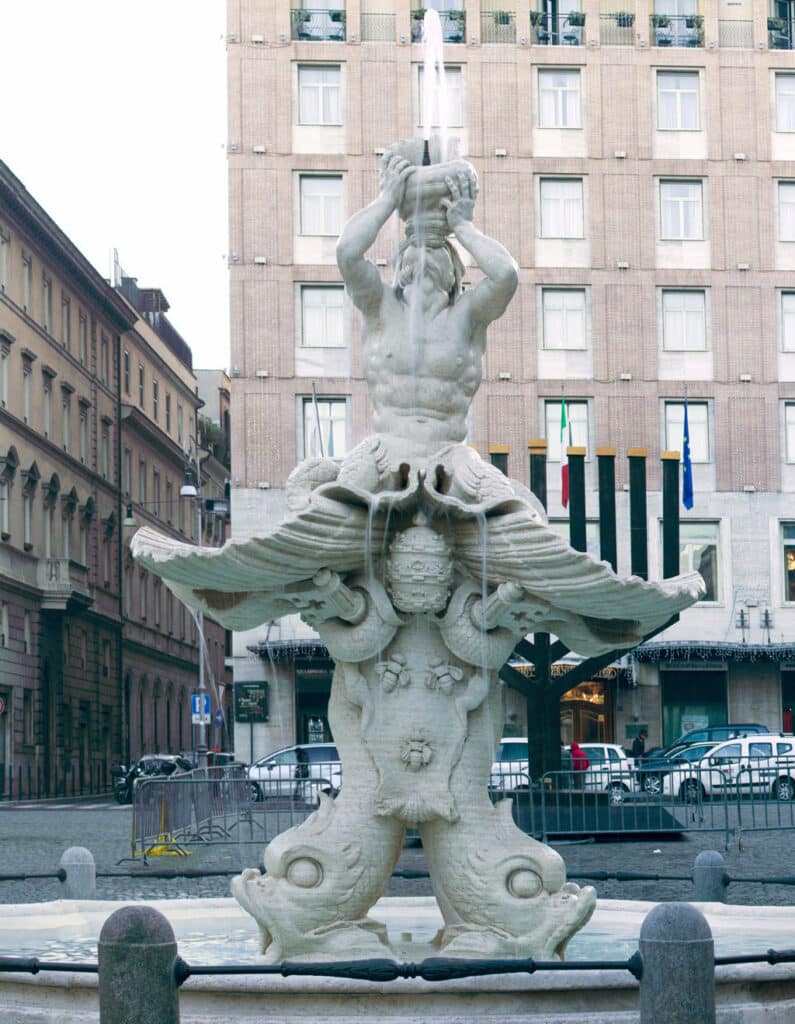
A jet of water emerges from the shell held by Triton which, dripping from the grooves of the shell, wets the whole work. The two papal coats of arms with the three bees, symbol of the Barberini family, are artistically intertwined between the tails of the dolphins. In their iconic simplicity, the three bees actually radiate multifaceted messages.
In fact, bees are the heraldic symbol of the client family, the Barberini; another key to understanding, however, is offered to us by the Treatise on the Love of God by St. Francis de Sales, published in 1616, where bees are compared to souls during their earthly sojourn.
This knot of meanings also intends to celebrate the purity of the waters flowing from the fountain, so sweet that they can be compared to the honey produced by bees; moreover, in the fountain, the water is transformed into the subtle buzzing of bees, thus giving life to a water-sound metamorphosis.
But the Roman people did not love the Barberini family (which dismantled many ancient monuments to build new structures and palaces) and this malevolence also involved the three bees, which – it was noted – sucked a large quantity of water from the tub, but returned very little, clear allusion to the huge taxes that the government imposed, returning very few benefits to the people.
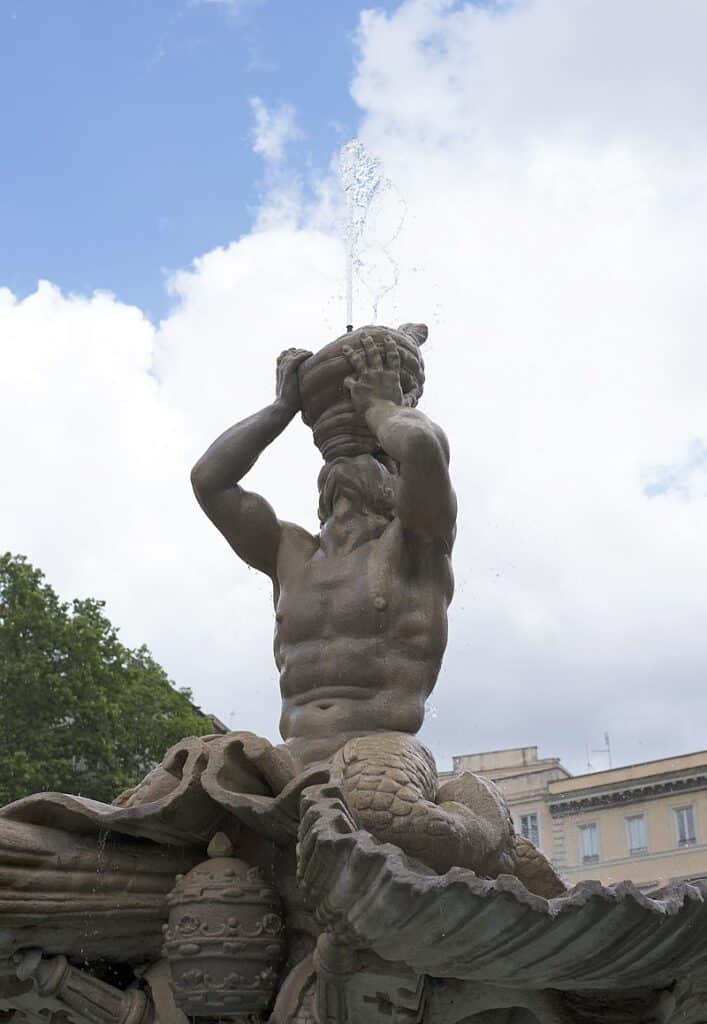
The Triton fountain has undergone various restoration interventions. The one from 1932 is important and curious, because the restorers managed to clean up the original fountain from about 12 cm of incrustations deposited on it over the centuries.
Its appearance after the restoration appeared so different in the eyes of the citizens that they, convinced that the statue had been replaced by a copy, became so furious that they unleashed a press campaign to restore the appearance of the fountain prior to the intervention of reset. The most recent restorations were carried out in 1987-1988, in 1990 and in 2013.
